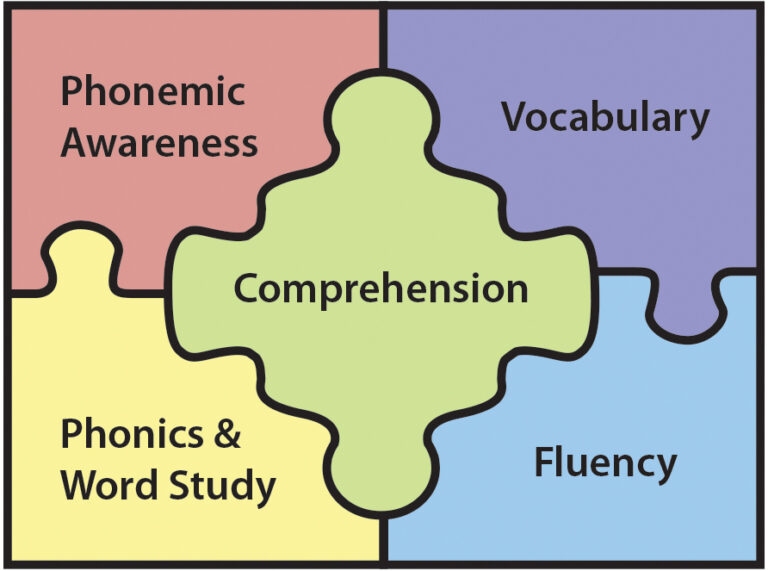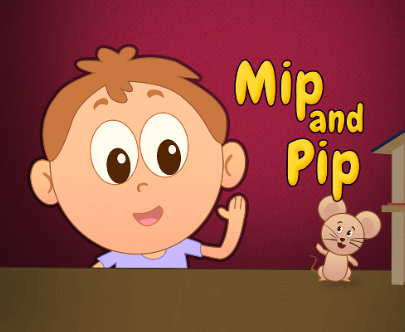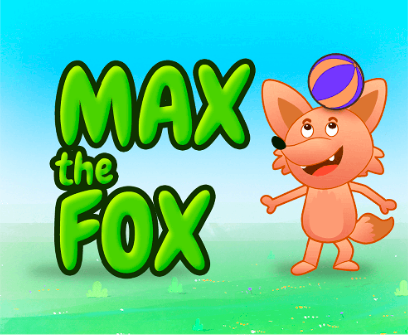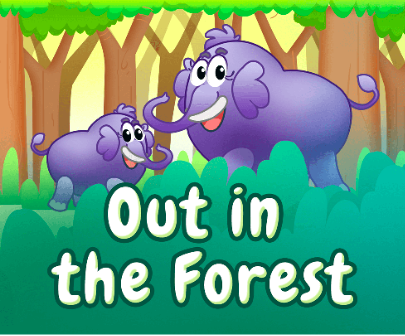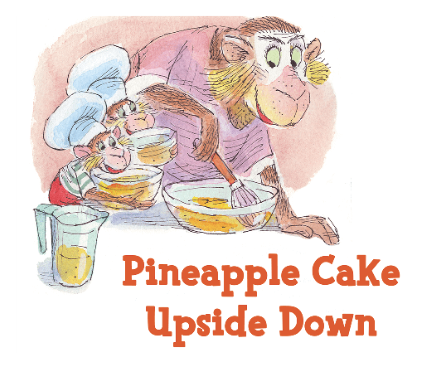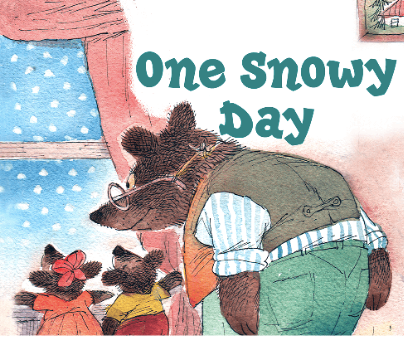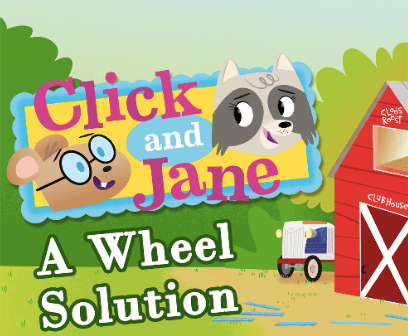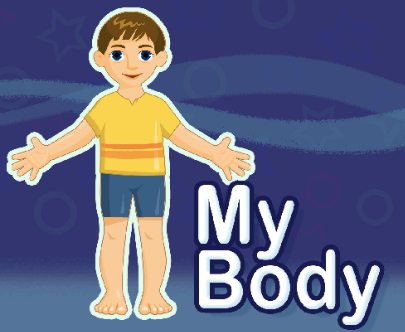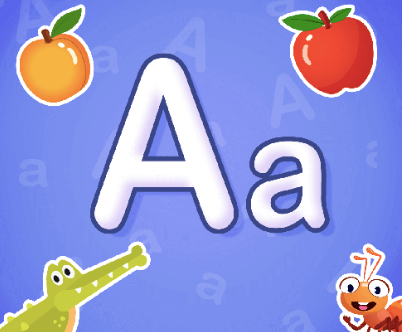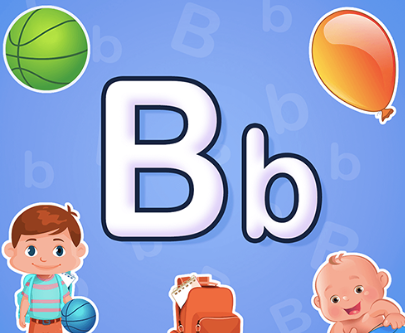Reading is more than just recognizing words—it’s a complex process involving multiple cognitive functions and skills. The science or components of reading, rooted in decades of interdisciplinary research across education, psychology, and neuroscience, help us understand how reading develops, why difficulties arise, and which instructional practices are most effective. Reading isn’t a one-size-fits-all approach or a packaged program; it’s built on evidence-based methods that align with how the brain processes language and print.
To become proficient readers, we must develop five core skills: phonemic awareness, phonics, fluency, vocabulary, and comprehension. These components, often referred to as the “five pillars” of reading, work together to build strong reading abilities. This blog will break down these pillars, explain why each is important, and how to build them for reading success.
Math & ELA | PreK To Grade 5
Kids see fun.
You see real learning outcomes.
Watch your kids fall in love with math & reading through our scientifically designed curriculum.
Parents, try for free Teachers, use for free
What Are The 5 Components Of Reading?
1. Phonemic Awareness
Phonemic awareness is the ability to hear and work with spoken words’ individual sounds (called phonemes). It’s one of the first skills children need to develop before learning to read. For example, a child who has phonemic awareness can hear that the word “cat” is made up of three sounds: /k/, /a/, and /t/. This skill helps kids understand that words are made up of sounds, which is key when learning to read and spell.
Here’s a deeper look into some key activities that build phonemic awareness:
1. Rhyming: Rhyming helps children recognize patterns in language by focusing on words that share the same ending sounds. For example, words like “cat” and “hat” both end with the “-at” sound. This teaches kids to listen carefully for similar sounds and trains their ears to detect patterns in spoken language.
Rhyming activities can include:
- Singing nursery rhymes like “Twinkle, Twinkle, Little Star” or “Humpty Dumpty.” These familiar tunes naturally emphasize rhyming words, making it easy for children to pick up on sound patterns.
- Playing rhyme games, where children think of words that rhyme with a given word. For instance, you might say, “Can you think of a word that rhymes with ‘sun’?” The child could respond with “fun” or “run.”
- Playing fun online rhyming games. Here are some fun games where your child will listen to several words and choose the ones that rhyme. It’s a fun and interactive way to sharpen their listening skills and help them master rhyming words while enjoying playful activities!
Begin here
2. Segmenting: Segmenting is the ability to break a word down into its individual sounds or phonemes. For example, the word “dog” can be segmented into /d/, /o/, and /g/. This skill helps children understand that words are made up of separate sounds that can be isolated.
Ways to practice segmenting include:
- Try engaging your child with fun segmenting games that make learning interactive. In these games, a friendly character guides your child to break down the sounds in a word. By tapping on the character, the word is broken into individual sounds, which are then sounded out for your child to hear. It’s a playful way to help kids understand how words are formed and improve their phonemic awareness.
Begin here
- Clapping out sounds: When saying a word like “cat,” clap for each sound. You would clap once for /k/, once for /a/, and once for /t/. This physical movement helps children connect each sound to an action, making it more memorable.
- Using objects: You can also place small objects (like blocks or coins) to represent each sound in a word. For example, if segmenting the word “fish,” you’d place three objects for the sounds /f/, /i/, and /sh/.
3. Blending: Blending is the opposite of segmenting, where children take individual sounds and put them together to form a whole word. For example, if you say the sounds /m/, /a/, and /n/, the child should be able to blend them together to make the word “man.”
Blending activities include:
- Online blending games are a fun and effective way to help your child understand how sounds come together to form words. In these games, a fun character guides your child to blend sounds, which are broken down into bubbles. As each sound is pronounced, the character helps your child combine them to make a word, making the process engaging and easy to understand. This playful approach reinforces how sounds fit together.
Begin here
- Sounding out words during reading time. When reading simple books, point to a word like “bat” and ask the child to sound it out, first breaking it into /b/, /a/, and /t/, then blending it together into “bat.”
- Listening games: Say the sounds of a word separately and have your child guess the word by blending them. For example, say “/s/, /u/, /n/” and have the child say “sun.”
Related Reading: Best Listening Activities for Kids
2. Phonics
Phonics is the method of teaching children how to connect sounds with letters or groups of letters (like “sh” or “ch”) and use this knowledge to read and spell words. It’s a key step that builds on phonemic awareness, moving children from hearing sounds to recognizing how those sounds are represented in writing.
When children learn phonics, they understand that letters have sounds, and when these sounds are put together, they form words. Phonics gives children the tools to decode words, helping them read more independently and confidently.
Related Reading: How to Teach Phonics to Kids
Here’s a breakdown of key phonics concepts that parents and teachers can use:
1. Letter-Sound Correspondence: At the core of phonics is teaching children that each letter has a sound (or sometimes more than one sound). For example:
- The letter “m” makes the /m/ sound, as in “man.”
- The letter “a” makes the short /a/ sound, as in “cat.”
- Some letters work together to create different sounds, like “ch” in “chat” or “sh” in “shop.”
Children first learn the sounds of single letters and then progress to more complex combinations. Letter-sound games can help reinforce this concept. Here are some fun games where they’ll be guided by a playful character, Buck Buck, who needs help finding the correct sound for a given letter. The child is presented with multiple sound options and must choose the right one. If they pick the wrong sound, Buck Buck encourages them with a friendly “let’s try again,” keeping them motivated to improve their letter-sound recognition while having fun!
Begin here
Related Reading: How to Teach Letter Recognition in 6 Easy Steps
2. Decoding Words: Once children know their letter sounds, they can start decoding words. This means they can look at a word, recognize the letters, and use the sounds they’ve learned to read the word aloud. For example, when they see the word “bat,” they can decode it by sounding out the letters: /b/, /a/, /t/ to read “bat.”
Parents and teachers can support decoding by:
- Sounding out words together during reading. Encourage children to use their phonics skills to read words they don’t know, rather than guessing.
- Practice with simple, phonics-based books that use essential words they can decode. Here are some decodable books you can assign to your child and track their progress to understand where they are and need help. These are designed to reinforce phonics instruction and are composed of text that strictly adheres to the phoneme-grapheme correspondences children have been taught. By focusing on systematic decoding, these books help solidify neural pathways associated with phonemic awareness and orthographic mapping, crucial for early reading fluency and word recognition:
3. Digraphs and Blends: As children get more comfortable with basic letter sounds, they will learn about digraphs (two letters that make one sound, like “th” in “that” or “sh” in “ship”) and blends (groups of letters that are pronounced together but each letter keeps its sound, like “bl” in “blue” or “st” in “stop”).
For example, use the following worksheets where kids are presented with digraphs like ch, wh, ph, sh, th, and words or pictures such as chart, shell, throw, and more. The task is to place each word under the correct column based on the digraph it starts with. This activity reinforces the understanding of how two letters can combine to create a unique sound. By categorizing words, children not only practice recognizing these sounds but also improve their spelling and reading skills.
Begin here
5. Sight Words: Some words can’t be easily decoded using phonics rules. These are often called sight words or high-frequency words (like “the,” “was,” or “said”). Children need to recognize these words on sight because they don’t always follow regular phonics rules.
Parents and teachers can:
- Play sight word games online to keep it fun and engaging for kids so they don’t lose interest. Here are some games that you can try:
Begin here
- Print sight words list for sight word practice, encouraging children to memorize these tricky words. Here is a list that you can print:
| the | and | for | can | you |
| see | in | not | on | we |
| is | it | he | she | to |
| at | me | up | down | go |
| like | no | big | small | my |
| look | here | yes | are | they |
| this | that | come | play | do |
| I | where | what | will | make |
| jump | run | red | blue | green |
| help | away | said | want | have |
| find | out | but | there | good |
| little | has | yes | who | be |
| went | down | am | her | him |
| look | how | again | day | his |
| with | why | or | each | other |
| under | after | before | one | two |
| three | four | five | six | seven |
| eight | nine | ten | all | any |
| more | many | most | now | soon |
| some | every | very | just | when |
- Point out sight words in books while reading. For instance, you might say, “This word is ‘the.’ It doesn’t follow the usual rules, so we remember it by sight.”
Related Reading: Best Sight Word Activities for Kids
3. Fluency
Fluency is the ability to read a text accurately, quickly, and with expression. It’s not just about speed—fluency means children can read smoothly, recognize words automatically, and understand what they’re reading without needing to stop and decode each word. Fluent readers focus on the meaning of the text, not just the words on the page.
Fluency plays a key role in reading comprehension because children who struggle with fluency often spend so much energy trying to decode words that they have little mental energy left to understand the meaning of what they’re reading. Here’s how fluency can be developed:
1. Reading with Accuracy:
Fluency starts with reading words correctly. If a child misreads many words, they won’t be able to understand the text well. Accuracy means recognizing and pronouncing words properly, which comes from a solid understanding of phonics and word recognition.
To build accuracy, parents and teachers can:
To develop fluency, it’s essential that children read texts at an appropriate level of difficulty, gradually increasing in complexity as they build skills. Here are some leveled readers designed to support this development by aligning with specific reading benchmarks and providing a controlled progression in phonetic patterns, sentence structure, and vocabulary. These books reinforce decoding and word recognition and help children read with accuracy and comprehension, gradually guiding them toward smoother, more expressive reading. Through leveled readers, children can confidently tackle texts that grow with them, fostering a natural pace and rhythm in reading.
- Provide gentle correction during reading. If a child misreads a word, calmly correct them and have them repeat the word correctly.
2. Reading with Speed:
While fluency doesn’t mean rushing, fluent readers can read at a pace that feels natural, neither too slow nor too fast. Reading too slowly can break the flow of understanding, while reading too fast may cause the child to miss important details.
To encourage appropriate reading speed:
- Repeated reading is an effective strategy. Have children read the same short passage multiple times until they can read it smoothly. Each time they read, their speed and confidence typically increase.
- Paired reading with a fluent reader (like a parent or teacher) can help. Take turns reading aloud, letting the child hear how you read at a comfortable pace, and then encouraging them to mimic that speed when it’s their turn. Try these read-alouds; these books are designed for oral narration. They enhance phonological awareness and listening comprehension by introducing new vocabulary within contextualized language structures, making them an effective tool for scaffolding early literacy skills.
3. Expression and Phrasing:
Reading with expression means using the right tone, volume, and emotion while reading aloud. Fluent readers group words into meaningful phrases, understand punctuation, and can convey the emotion of the text. For example, they know to raise their voice slightly when reading a question or to add excitement when reading dialogue.
Activities to improve expression include:
- Modeling expressive reading. Parents and teachers can read aloud with proper expression, emphasizing punctuation and emotion. Children will often follow your lead in how they approach the tone of their reading.
- Echo reading. You read a sentence or passage with expression, and the child echoes it back, trying to match your phrasing and tone.
4. Building Fluency with Practice:
Fluency develops through consistent practice. The more a child reads, the more familiar they become with common words and sentence structures, which improves their fluency over time. Practice doesn’t always have to be formal—it can be fun and engaging too.
Ways to encourage fluency practice:
- Choral reading: This is where you and the child read the same text together at the same time. It helps build fluency without putting pressure on the child to read alone.
- Reader’s theater: Turn reading into a fun performance by assigning parts in a story to different children (or between you and the child). They can practice reading their lines fluently and with expression, much like rehearsing a play.
Related Reading: Best Reading Fluency Activities for Young Readers
4. Vocabulary
Vocabulary refers to the knowledge of words and their meanings. It’s one of the most essential parts of reading because understanding words is critical for comprehension. When children encounter unfamiliar words, they may struggle to grasp the meaning of a sentence or text. The more words a child knows, the easier it becomes to read fluently and understand what they’re reading.
Vocabulary development is important in all areas of reading because it affects both decoding (sounding out words) and comprehension (understanding the text). Here are key strategies to help build vocabulary:
1. Exposure to Rich Language:
Children develop vocabulary through repeated exposure to new words in different contexts. This can happen during conversations, reading, or listening to others. The more children hear and see new words, the more they learn their meanings.
Ways to provide exposure include:
- Reading aloud to children. When you read books that contain new or challenging words, you can pause to explain their meanings. This helps children build their vocabulary while enjoying stories.
- Introducing new words in daily conversations. Use descriptive words and encourage children to ask about words they don’t know.
2. Teaching Vocabulary Explicitly:
In addition to exposure, it’s helpful to teach vocabulary directly. This means intentionally introducing and explaining new words and giving children time to practice using them.
Parents and teachers can:
- Introduce a “word of the day” and use it in different sentences throughout the day. For example, if the word is “enormous,” you might say, “That tree is enormous!” or “An elephant is enormous.” Here is a list that can help you do this:
| Word | Sentence |
| Bright | “The sun is very bright today, let’s wear sunglasses.” |
| Smooth | “Feel how smooth the surface of this table is.” |
| Crunchy | “These crackers are so crunchy, listen when I bite into them.” |
| Gigantic | “Look at that gigantic tree, it’s so much taller than the others!” |
| Fuzzy | “This blanket is really fuzzy and soft, isn’t it?” |
| Shiny | “Your shoes are so shiny after cleaning them!” |
| Sticky | “The glue is very sticky, make sure not to get it on your clothes.” |
| Bitter | “This grapefruit tastes bitter compared to the sweet orange.” |
| Fragrant | “The flowers in the garden are so fragrant, they smell lovely.” |
| Slippery | “Be careful, the floor is slippery because it’s wet.” |
| Gentle | “We have to be gentle when petting the cat so she doesn’t get scared.” |
| Noisy | “The construction outside is very noisy today.” |
| Soggy | “The bread became soggy after I dipped it in the soup.” |
| Velvety | “This pillow feels velvety, it’s so soft against my skin.” |
| Swift | “The bird flew in a swift motion across the sky.” |
| Massive | “That ship is massive, it looks bigger than a building!” |
| Icy | “The drink is icy cold, perfect for a hot day.” |
| Bumpy | “The road was bumpy, we felt every little rock while driving.” |
| Sparkly | “Her dress was sparkly under the lights, like a diamond.” |
- Play vocabulary games like matching words to pictures. Print these fun matching worksheets and let your child practice them:
Begin here
3. Using Context Clues:
Teaching children how to use context clues helps them figure out the meaning of unfamiliar words without needing to ask for help. For example, if they don’t know the word “delicious” in a sentence like “The cake was so delicious, we all had seconds,” they can guess that it means something good about the cake.
- To reinforce this skill, you can use context clue worksheets like the ones provided. These worksheets present sentences with underlined or highlighted words that may be unfamiliar to children. For each sentence, the children are encouraged to use clues in the surrounding text to determine the meaning of the unfamiliar word. For example, in the sentence, “Lily was elated when she received a surprise gift,” children can use the context of “surprise gift” to deduce that elated means something similar to being happy.
Begin here
This type of exercise helps children practice deducing word meanings on their own. The first worksheet focuses on having them select the correct meaning from multiple choices, while the second worksheet guides them to analyze words in orange using surrounding clues.
- Ask guiding questions like, “What do you think this word might mean based on what’s happening in the story?.” Try these fun worksheets:
Begin here
4. Engaging in Word Play:
Learning new words doesn’t have to be boring. Engaging in word games and playful activities can help children remember vocabulary better. Activities like crossword puzzles, word searches, or playing Scrabble can make vocabulary building fun. Try these fun word search and crossword worksheets:
Begin here
Related Reading: How to Improve Kids' Vocabulary
5. Comprehension
Comprehension is the ability to understand, interpret, and make meaning from what is read. It’s often seen as the ultimate goal of reading because, without comprehension, reading is just the act of decoding words without truly grasping their meaning. Comprehension sits at the top of the hierarchy of reading skills because it relies on other fundamental abilities, such as phonemic awareness, phonics, fluency, and vocabulary.
It is one of the essential science of reading components, as it ties together all the skills a reader develops. Understanding a text requires readers to make connections between words, sentences, and ideas, while also applying their prior knowledge and critical thinking.
Here’s how comprehension works and how parents and teachers can help children develop this skill:
1. Understanding Literal Meaning:
The first step in comprehension is understanding the basic, or literal, meaning of the text. This involves identifying key details, recalling facts, and understanding the sequence of events in a story.
To help children grasp literal meaning, you can:
- Ask direct questions like “Who is the main character?” or “What happened first in the story?”. Here are some fun worksheets that can help your child understanding and comprehending the literal meaning:
Begin here
- Encourage children to summarize what they’ve just read. This helps them focus on key details and sequence. Get started with these summarizing worksheets:
Begin here
2. Making Inferences:
Good readers don’t just rely on what is directly stated—they also make inferences by reading between the lines. This means using clues from the text, along with their own knowledge, to figure out information that isn’t explicitly stated.
To build this skill:
- Ask open-ended questions like “Why do you think the character acted that way?” or “What do you think will happen next?”. To encourage this, try these inference worksheets:
Begin here
- Use think-aloud strategies where you model your own thinking process while reading a passage. For example, you could say, “I know the character is nervous because it says they were shaking.”
3. Building Background Knowledge:
Having background knowledge about a topic helps readers understand texts more easily. If a child knows something about the subject matter beforehand, they are more likely to grasp deeper meanings and make connections while reading.
To build background knowledge:
- Discuss new topics before reading. For instance, if you’re reading a book about space, talk about planets and stars beforehand.
- Expose children to a wide range of reading materials, including fiction, nonfiction, and informational texts. The more topics they’re familiar with, the better their comprehension will be across different subjects.
4. Asking and Answering Questions:
Encouraging children to ask their own questions while reading helps them engage more deeply with the text. It also helps them focus on the meaning of what they’re reading rather than just moving through the words.
Ways to promote questioning:
- Use guided questions that encourage critical thinking, such as “What is the main idea of this story?” or “Why do you think this event was important?”
- Ask children to predict outcomes and then discuss whether their predictions were correct after reading. Try these worksheets to reinforces active engagement with the text:
Begin here
5. Visualizing:
Visualization is the ability to create mental images based on the text. When children picture what they’re reading, it helps them connect with the story on a deeper level and improves their overall understanding.
To practice visualization:
- Encourage children to describe what they “see” as they read a story. Ask questions like “What do you think the setting looks like?” or “How do you picture the character’s emotions?”
Begin here
Related Reading: Best Reading Comprehension Activities for Kids
Conclusion
To truly help children succeed in reading, it’s essential to recognize that the five components of reading are interconnected. Strengthening each component allows children to progress in all areas of reading. By focusing on tailored activities and consistent practice in each pillar, you can ensure that kids not only learn to read but also enjoy and understand what they read.

















